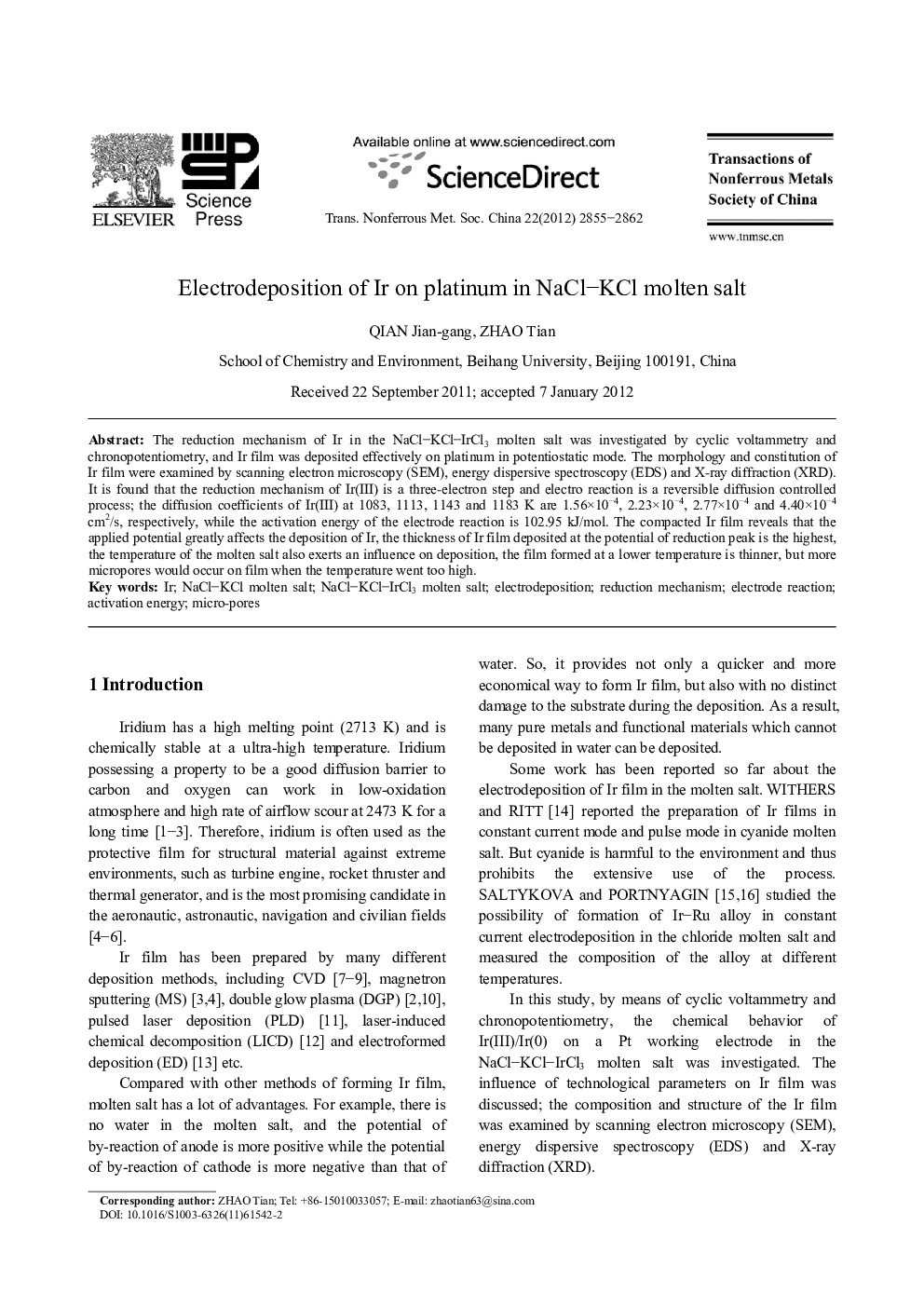| Article ID | Journal | Published Year | Pages | File Type |
|---|---|---|---|---|
| 1636813 | Transactions of Nonferrous Metals Society of China | 2012 | 8 Pages |
Abstract
The reduction mechanism of Ir in the NaCl-KCl-IrCl3 molten salt was investigated by cyclic voltammetry and chronopotentiometry, and Ir film was deposited effectively on platinum in potentiostatic mode. The morphology and constitution of Ir film were examined by scanning electron microscopy (SEM), energy dispersive spectroscopy (EDS) and X-ray diffraction (XRD). It is found that the reduction mechanism of Ir(III) is a three-electron step and electro reaction is a reversible diffusion controlled process; the diffusion coefficients of Ir(III) at 1083, 1113, 1143 and 1183 K are 1.56Ã10â4, 2.23Ã10â4, 2.77Ã10â4 and 4.40Ã10â4 cm2/s, respectively, while the activation energy of the electrode reaction is 102.95 kJ/mol. The compacted Ir film reveals that the applied potential greatly affects the deposition of Ir, the thickness of Ir film deposited at the potential of reduction peak is the highest, the temperature of the molten salt also exerts an influence on deposition, the film formed at a lower temperature is thinner, but more micropores would occur on film when the temperature went too high.
Related Topics
Physical Sciences and Engineering
Materials Science
Metals and Alloys
Authors
Jian-gang QIAN, Tian ZHAO,
